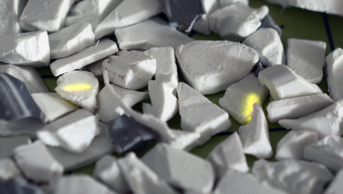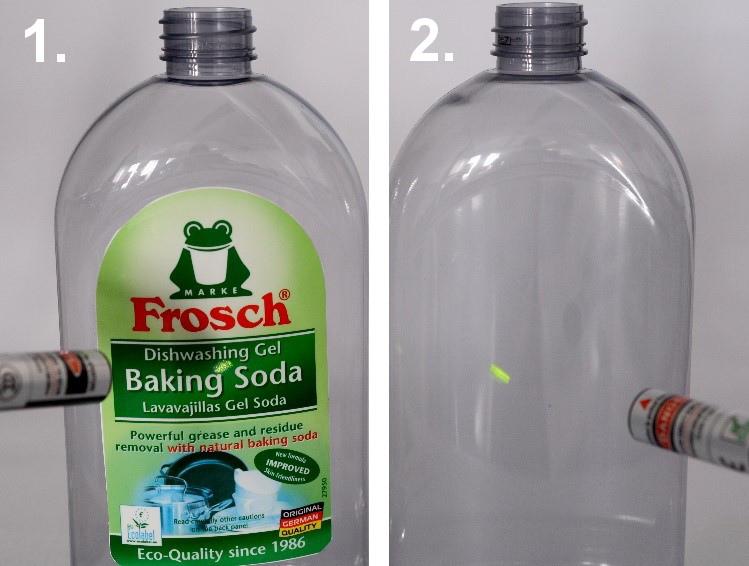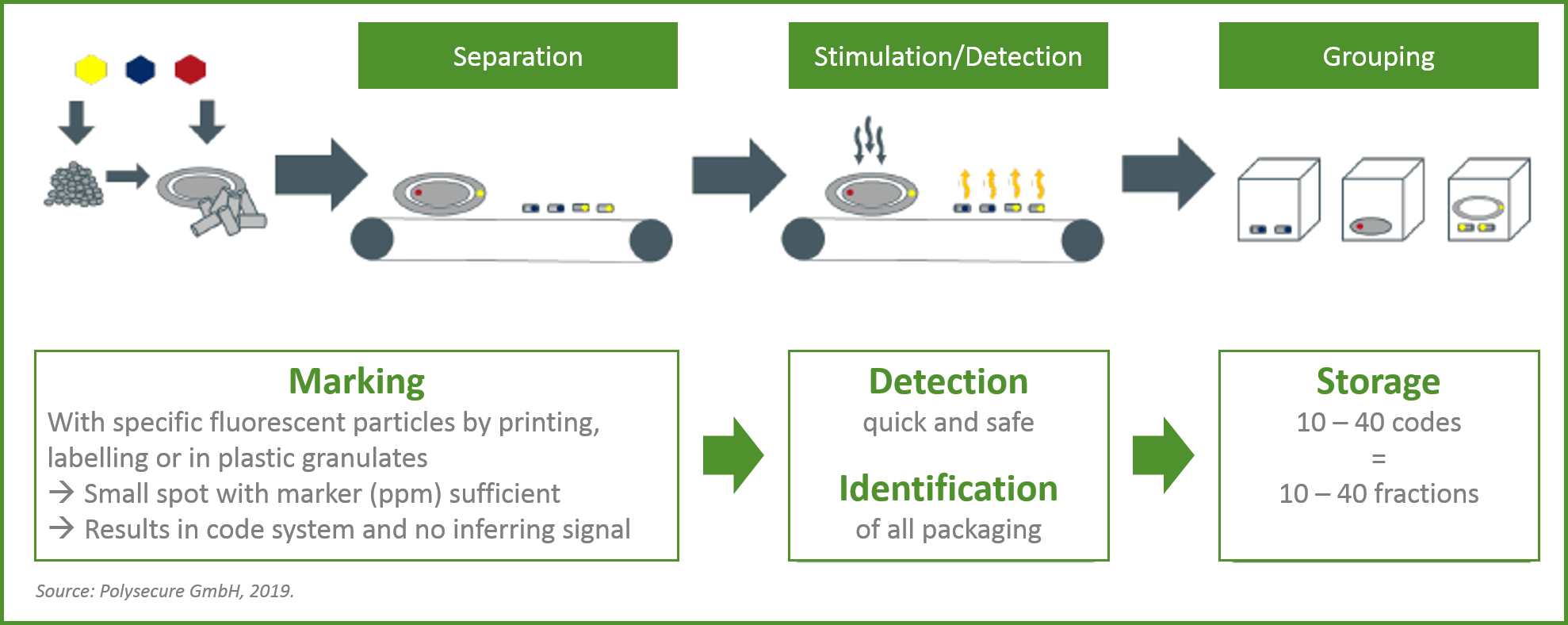Briefing
When identification cannot be achieved by intrinsic properties of materials or products, Tracer-Based Sorting (TBS) provides an innovative detection technology based on a fluorescent marker. Parts per million quantities of the marker on products & materials serve as a means of identification e.g. for brand-specific product identification, or to distinguish food from non-food packaging items.
The following issues can be addressed with Tracer-Based Sorting (TBS):
Sorting and recycling of packaging waste
In Europe, about 50 million tonnes of plastics are consumed annually, while at the same time about 26 million tonnes of plastic waste are produced. This waste is landfilled (31%), incinerated (39%) or recycled. Less than 30% of all plastic waste in Europe is collected for recovery. [1]
Packaging waste collected from households is sorted in several steps in central sorting facilities, which also include a manual after-sorting process. At the moment certain packaging types (e. g. multilayer polymer pouches, multi-material composites, full-sleeve packagings, dark plastics) cannot be identified by existing sorting techniques or are identified falsely and are thus contaminating waste streams heading to recycling plants.
Product identification to close loops in the circular economy
Besides these unsolved identification issues, other products in production or end-of-life wastes e.g. from electrical/electronic products, automobiles, or other goods may also require improved identification and sorting technologies.
Project description:
The R&D Project MaReK (marker-based sorting and recycling system for plastic packaging) of Pforzheim University, Polysecure GmbH and further project partners are currently developing a solution to recover high-quality secondary raw material from post-consumer plastic packaging waste. The consortium aims to transfer the technology to other (technical) fields of application.
For more Information click here
Technology description:
Tracer-Based Sorting applies special powdery phosphors. They fluoresce in a certain colour with a defined (narrow) wavelength when illuminated with an infrared laser, which is invisible for the human eyes. No other materials in nature are known to do so. Very little of these sorting markers are sufficient for recognition.

[TBS marker fluorescence (yellow) in ground PVC particles (Source: Polysecure GmbH)]
There are two approaches to apply the marker to material or products:
- They can be applied to the surface by mixing, for example, a printing ink or varnish and then printing on labels. This allows the marker to be separated from the material (e.g. plastic bottles) during recycling, leaving a clean, unmixed material (plastic).
- The markers are mixed directly into the material. Then the material can be identified repeatedly since the markers are very robust (thermal stability up to approx 800°C).

[Marker application on labels/surface (left) and as additive in the polymer material (right) (Source: Polysecure GmbH)]
By marking the material, it can be identified and authenticated when the product is disposed of by a TBS system. An invisible laser stimulates the tracer to emit the fluorescence. After having detect and identified the material it can be deposited in the correct recycling fraction.
The technology offers the following features:
- Marker substance effect is a specific feature of few man-made substances
- Marker will provide a specific fluorescence signal of the material/product with a narrow wavelength distribution
- Marker particle distribution pattern in the material may be used for producing a unique authentication option (unique ID)
- Marker substance is robust against thermal and other stresses (UV resistance)
- Identification works even when items are relatively dirty
- Since only very little marker is applied it has only minor or no influence on product properties
Limitations:
- The number of sorting codes is not unlimited. More codes require more marker material. It always makes sense to really check how many sorting codes are needed. For packaging waste, 20 – 40 codes seem sufficient. MaReK currently develops the most efficient tracers for such a portfolio of codes.
- The infrared laser needed for identification will require safety measures
- For a recycling-system, at least two stakeholders are involved: the producer has to add the tracers and the recycler has to use TBS technology for sorting out the marked material
Benefits:
- TBS makes it possible to distinguish between materials or products that could not previously be distinguished from each other
- After marking a material or product detection is possible independent of intrinsic material properties

[General principle of marking and detection with TBS (Source: Polysecure GmbH)]
Additional Material:
-
[video] POLYSECURE Tech video on solving the plastic litter problem by Tracer-Based-Sorting (TBS)
-
[pdf] Tracer Based Sorting – Innovative Sorting Options for Post Consumer Products
-
[pdf] MaReK – Mit Leuchtstoffen das Kunststoffrecycling verbessern (german)
Reference:
[1] A European Strategy for Plastics in a circular economy, COM(2018)28 final, European Commission, Brüssel 2018.